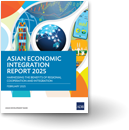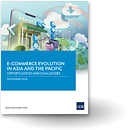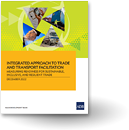Has regional integration in Central Asia been trade liberalizing?
In the last few years, economic policy rhetoric and actions in Kazakhstan, Russia, and Belarus have been notably tilted towards regional economic integration. Starting from around mid-2009, developments preceded at breakneck speed as compared with other similar regional economic integration arrangements.
After a decision by the three Heads of State on a Common External Tariff (CET) of the Customs Union (CU) at the end of November 2009, the CET was introduced on 1 January 2010, followed by the formation of a Common Customs Space in July 2010. In addition, a Common Economic Space (CES), which, in addition to the CET, envisages the free movement of services, capital and labor, was launched on 1 January 2012. Recent announcements indicate that the CES is encouraging other former Soviet Union countries to join this integration initiative, which ultimately aims at the formation of a Eurasian Union.
These developments have various implications for the economies of the CES countries. While on special leave from the ADB, I recently analyzed the impact of these regional integration processes on Kazakhstan’s economy. Before employing the Computable General Equilibrium models for this purpose, the first step for such an analysis is to understand the degree of change in the level of tariff protection in Kazakhstan which has taken place after its accession to the CU.
This is important not only as inputs to these models, but also because the level of tariff protection and trade policy in general play an important role for the country’s economic growth and its competitiveness. It is a widely shared belief among economists that high rates of protection typically depress economic development, and more open trade regimes are more conducive to growth.
Effective trade policy also affects domestic resource allocation and national competitiveness. It is thus natural to ask how the level of Kazakhstan’s tariff protection changed upon joining the Customs Union? To answer this question, one needs to compute and then analyze the comparable tariff schedules and indicators for the level of tariff protection, both before and after its accession to the CU.
Despite being a seemingly simple task, comparing average tariff levels across time and/or countries is often complicated by the existence of various tariff types: ad valorem, specific, and compound tariffs. Making computations based on a common and consistent denominator, by, e.g., calculating the ad valorem equivalent (AVE) of a tariff – had often not been practicable in the absence of detailed import data (e.g. import values and units of measurement at the most disaggregated level) in a usable format.
In the past, many studies typically ignored specific tariffs or specific components of compound tariffs. This approach naturally resulted in a distorted picture of the true level of tariff protection (i.e. by either underestimating or overestimating it), depending on the relative importance of specific and compound tariffs, and the country’s import composition.
With recent advancements in the availability of trade data at the most disaggregated levels, it is now possible to compute AVE tariff rates. By using a proper methodology for converting specific and compound tariffs to their ad valorem equivalents, and by using the most detailed import data, at the 10-digit commodity classification level for Kazakhstan, we computed the applied level of tariff protection in Kazakhstan, both before and after accession to the CU.
Our analysis demonstrated that the level of effective applied tariff protection in Kazakhstan before accession to the CU was overall not very high by international standards: the AVE MFN (Most Favoured Nation) tariff rates were 6.45% as a simple mean and 4.30% as a weighted mean for the economy as a whole.
After joining the CU, Kazakhstan’s level of tariff protection increased considerably: for the economy, the simple mean AVE tariff rate increased from 6.45% to 12.10%, and the weighted average AVE tariff rate, from 4.30% to 12.67%.
Among the most protected sectors of the economy after joining the CU were the automotive, furniture, tobacco industry, garments, food, leather and wood, textiles and some unclassified goods’ sectors.
International comparisons also show that after the accession of Kazakhstan to the CU, its level of tariff protection was higher than those in the low and middle income countries, and above the (2009) world average.
The results above refer to the situation as of 2011. The computation of tariff protection levels requires continuous updating and reviewing (since, for example, many ‘transitional’ tariffs do not apply at present). In addition, the WTO accession negotiations of Kazakhstan are at an advanced stage, which will obviously affect the country’s overall tariff levels and have other important trade policy implications.
Full papers on tariff protection levels in Kazakhstan can be accessed here.




